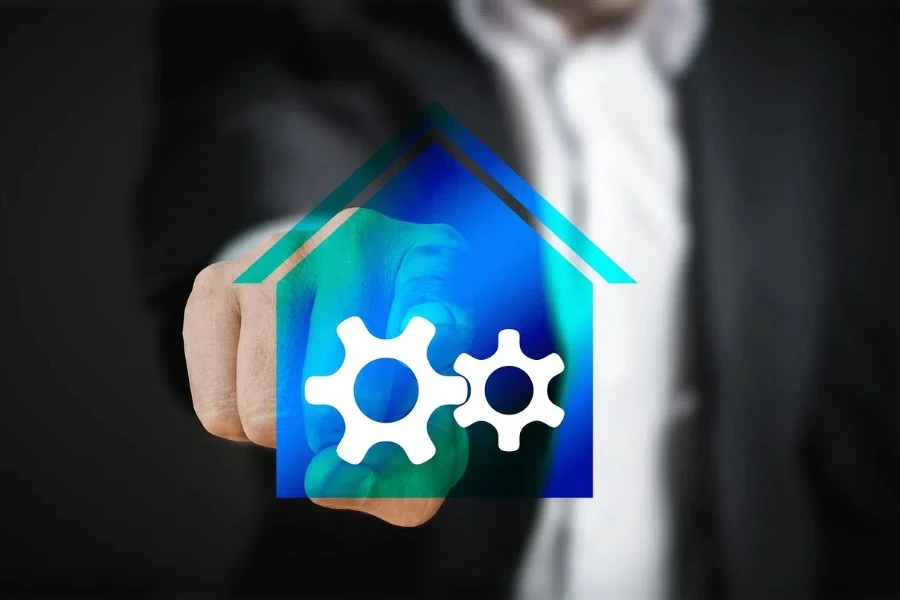With the need for instant gratification and convenience taking centre stage in most aspects of our lives, smart home devices are proving themselves to be life-changing tools, especially when it comes to the way that we live at home. Not only do such gadgets make it easier than ever for you to control your home environment and the appliances and devices within it, but they also offer a myriad of other benefits, including enhanced security, energy savings and, of course, a truly futuristic home setting. Want to know how smart home devices work, how to use them, what their advantages and challenges are, and much more? If so, you’ve come to the right place.
Table of Contents:
– What is a smart home device?
– How does a smart home device work?
– Benefits and drawbacks of smart home devices
– How to choose smart home devices
– How to use smart home devices
What is a smart home device?

Smart home devices are the foundation of a connected home, a series of automated or remotely-controlled gadgets that help you manage your home and its functions. These range from the basics, such as lighting systems and thermostats, to security cameras, smart speakers, locking systems and more, all designed to make your home ‘smarter’, to make your life more convenient and comfortable, and also more secure. As technology is integrated into the various aspects of your home, you can control your home environment through your smartphone or voice commands, which promises a connected and more efficient way of living.
How does a smart home device work?

What makes smart home devices bewitching is that they’re connected to the internet and to each other, creating a network of devices in your home. For the most part, they do this via Wi-Fi, but other technologies, such as Bluetooth, Zigbee, Z-Wave or others, are also involved. They can be controlled through apps, voice assistants, or via rules you set. For instance, a smart thermostat learns your schedule and temperature preferences over time, and then sets the heat or air conditioning accordingly without you having to lift a finger.
Benefits and drawbacks of smart home devices

Whether it is smart lighting, your thermostat, your security system or any other smart home gadget, they promise a sophisticated level of smart comfort: you can program your lights to simulate natural light patterns, which will help you with sleep cycles. You can buy smart security cameras that check up on your home when you aren’t there, and thus may prevent a burglar from breaking in. The promise of huge convenience and enhanced energy efficiency and security sound great. But why does the idea of a smart home bring unease? First, there are widespread concerns about data privacy and security. Because smart home devices are connected to the internet, they can potentially be hacked. Secondly, apart from privacy concerns, the hardware setup and even initial costs can be prohibitive for many. And thirdly, such devices are completely dependent on the internet for operation, which means that, in case of a network outage, they are rendered inoperable.
How to choose smart home devices

The wide variety of smart home devices can be daunting. So how do you know if you are selecting the right ones? The first step is to determine your needs and the problems you want to solve. Do you want to use smart lighting around the house to lower your energy consumption? Do you want to strengthen your home security? Are you interested in automating your home to make it more convenient? How many existing devices (smart lights, heating, thermostats, etc) are compatible with this device? And which ecosystems does the device work with? Is it easy to install and to use? Are there privacy and security features? Which ones?
How to use smart home devices

Using smart home devices to their fullest potential takes a little set-up work up front. Start with a good app on your smartphone or tablet and connect your device to your home Wi-Fi network. Make sure to explore the settings in the app and the particular device, and set them so that they match up with your lifestyle and live the way you want to live. Where possible, recognize and set up voice recognition as well. The idea is to create a network of devices that are working together to automate your life so you can concentrate on what’s really important.
Conclusion
Smart home devices are the next big step on the road to smarter living. They aren’t perfect, but their benefits in terms of convenience, safety and energy can’t be denied. Once you’ve carefully chosen the right devices and learned to use them in the right way, your house can become a smart home that not only makes life easier but also keeps up with you. It’s the future of home living – whatever you want it to be.




